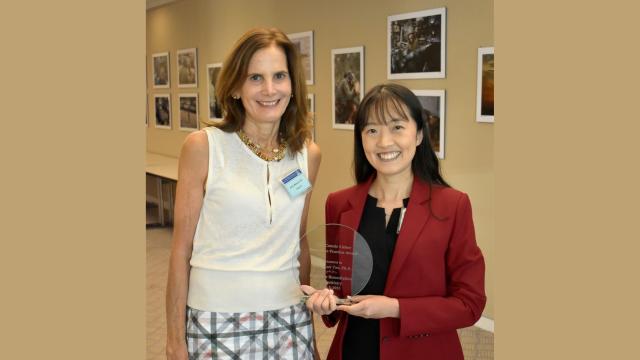
Professor Tan Thiam Soon, President, SIT, together with Mr Andrew Tjioe, executive chairman, Tunglok, and the Class of 2015 decked out in their chef whites.
SINGAPORE – The next time you dine at Michelin-starred restaurant Le Bernadin in New York or celebrity chef Wolfgang Puck’s CUT at Marina Bay Sands, you might be having a taste of what our Culinary Institute of America (CIA) graduates are capable of. Many from the recently graduated class of 2015 have made the cut and will begin their culinary career at established restaurants locally and overseas like Luke’s Oyster Bar and Chop House in Singapore and Bar Tartine in San Francisco. Some have also been offered further training in the US.
The 36 fresh graduates have carved out for themselves promising paths, and it isn’t by chance. “Our graduates go through over 1,300 hours of hands-on training. They have attended school from 7:00 am to 7:00 pm over the last two years,” said Chef Eve Felder, Managing Director, CIA Singapore.
How do these students survive such tough training? According to Chef Felder, the main ingredient is passion. “All of our students are chosen based on their commitment to the industry and through the interview process, where we assess their leadership potential. This cohort worked hard, and they are clearly passionate about the field.”
The CIA curriculum follows a three-pronged structure – theoretical learning, learning from industry experts and hands-on training. All these thoroughly equip CIA students with a toolbox of skills that are relevant for their success in the industry. In addition, business management and liberal art classes further develop their leadership skills. They are also trained to be organised, both physically and mentally, to be able to prioritise and multi-task, and to work as a team.

At the graduation banquet, junior culinarians prepare the food for guests and man the live stations.
The well-organised graduation banquet prepared by CIA juniors after the ceremony is testament to the success of CIA’s pedagogy. From chef to waiter, each student has a role to play. “The juniors build on their previous knowledge and skills in preparing reception food in a banquet situation. They prepare for two days and, on the day of the event, they come in at 4:00 am to have the food freshly cooked for the reception,” said Chef Felder.
Clearly our CIA students aren’t just chefs who are adept at wielding a knife or any cooking instrument. They are well-rounded culinarians!
“Singapore is just seeing the potential of having professionals educated in culinary management. Our students will ultimately lead this multi-trillion dollar industry. Parents and students alike are understanding the opportunities available in this field. All of our students are stars in the making,” said Chef Felder.
![[FA] SIT One SITizen Alumni Initiative_Web banner_1244px x 688px.jpg](/sites/default/files/2024-12/%5BFA%5D%20%20SIT%20One%20SITizen%20Alumni%20Initiative_Web%20banner_1244px%20x%20688px.jpg)


